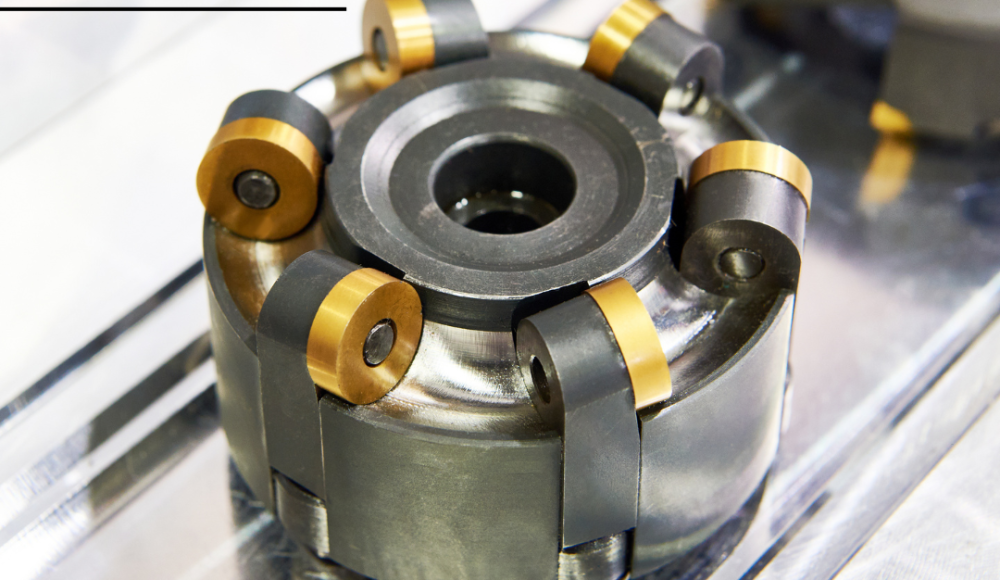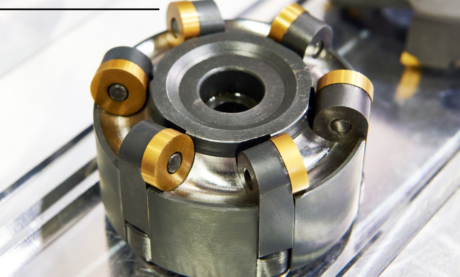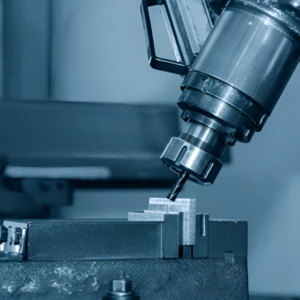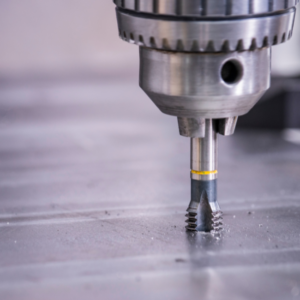Ever stood scratching your head at the milling machine, wondering if face milling or end milling is the way to go? Don’t worry, you’ll know how to make the decision after reading this article.
We’ll break down the difference between face milling and end milling in simple terms, so you can confidently choose the right tool for your next project. No more guesswork, just smooth, efficient milling.
In this guide, we’ll cover:
- What is face milling and its process?
- What is end milling and its process?
- The core differences between face and end milling
- When to choose face milling for your projects
- When end milling is the better option
- Pros and cons of each technique
Let’s find out.
What Is Face Milling and Its Process
Face milling operation is the undisputed champion when it comes to tackling large, flat surfaces. Think tabletops, engine blocks, or even the side of a building (yes, really!).
The process begins by securely mounting the workpiece onto the milling machine table. A face mill cutter, equipped with multiple cutting inserts, is then attached to the machine’s spindle. The face milling cutter rotates at high speed, and the table feeds the workpiece into the peripheral milling cutter. As the cutter slices across the top surface of the workpiece, it removes material, leaving behind a smooth, flat finish.
Depending on the desired result, face milling can be performed in either conventional or climb milling mode. Conventional milling involves the cutter rotating against the direction of feed, while climb milling involves the face mill cutter rotating in the same direction as the feed. Each technique has its own advantages, with climb milling typically offering a smoother surface finish and reduced cutting forces.
Here’s why face milling shines in these scenarios:
- High Material Removal Rate:Face milling cutters have multiple cutting edges that slice through material like a hot knife through butter. This makes them incredibly efficient for quickly removing large amounts of material.
- Superior Surface Finish:The multiple cutting edges of a face mill also leave behind a smoother surface finish than an end mill. This is crucial for applications where aesthetics or precision are paramount.
- Reduced Cutting Forces:Because the cutting edges are spread out over a larger area, face milling generates less heat and vibration than end milling. This translates to longer tool life and less wear and tear on your machine.
Examples
Still not convinced? Let’s look at some areas where face milling is applied:
- Aerospace:Face mill speed and feeds which is used to create smooth, precise surfaces on aircraft components like wings and fuselages.
- Automotive:Engine blocks and cylinder heads are often face milled to ensure proper sealing and performance.
- Construction:Large metal plates and beams used in construction are often face milled to create flat surfaces for joining.
- Tool and Die Making:Face milling is used to create smooth, precise surfaces on molds and dies used in manufacturing.
As you can see, face milling is a versatile and powerful machining technique that’s essential for a wide range of industries.
What Is End Milling and Its Process
While face milling excels at flattening surfaces, end milling is the key role of intricate work. If you need to create slots, pockets, complex shapes, or even detailed engravings, end milling is your go-to tool.
End milling is the go-to technique for creating intricate shapes and details. The workpiece is mounted onto the machine table, and an end mill cutter is attached to the spindle. The end mill can be moved in multiple axes, allowing for complex cuts and contours.
The end mill plunges into the workpiece, removing material from the sides and end. Upcut milling lifts chips away from the workpiece, while downcut milling pushes chips down into the material. The choice of upcut or downcut milling depends on the specific application and desired outcome. With its versatility and precision, end milling is a valuable tool for creating a wide range of parts and components.
End Milling’s Edge: Precision and Versatility
Here’s where end milling truly advantages:
- Intricate Cuts:End mills come in a variety of shapes and sizes, allowing you to create intricate cuts and details that would be impossible with a face mill.
- Multiple Axes of Movement:End mills can be moved in multiple directions, giving you the flexibility to create complex shapes and contours.
- Plunging Capability:Unlike face mills, end mills can plunge straight down into a workpiece, making them ideal for creating pockets and slots.
The Applications of End Milling
Let’s explore some real-world examples where end milling is applied:
- Mold Making:End mills are used to create intricate cavities and details in molds for plastic injection molding and other manufacturing processes.
- Medical Device Manufacturing:End mills are used to create precise features on medical implants and other devices.
- Electronics Manufacturing:End mills are used to create circuit boards and other electronic components.
- Jewelry Making:End mills are used to create intricate designs and patterns in jewelry.
As you can see, end milling is a versatile and precise machining technique that’s essential for a wide range of industries.
Face Milling vs. End Milling
Let’s get one thing straight: both face milling and end milling are machining processes that remove material from a workpiece. But like any dynamic duo, they each have unique strengths and weaknesses that make them better suited for different tasks.
What’s the Main Difference? It’s All in the Cut
The key difference lies in how they cut:
- Face Milling:Think of a buzzsaw slicing through a log. Face milling uses a rotating cutter with multiple teeth to remove material from the top surface of the workpiece. This is your go-to for creating smooth, flat surfaces.
- End Milling:Picture a drill bit, but with cutting edges on the sides as well as the tip. End milling uses a rotating cutter to remove material from the sides and end of the workpiece. This versatile technique is perfect for creating slots, pockets, and complex shapes.
Why Does This Matter to You?
Choosing the right milling technique can mean the difference between a flawless finished product and a costly mistake. Imagine trying to carve a detailed sculpture with a chainsaw – not ideal, right?
Picking Right Milling: Face or End?
So, which milling technique is right for your project? It all boils down to what you’re trying to achieve. Let’s break it down:
When to Choose Face Milling:
- Large, Flat Surfaces:If your workpiece has a large, flat surface that needs to be machined quickly and accurately, face milling is your best bet.
- High Material Removal Rate:Need to hog out a lot of material fast? Face milling’s got you covered.
- Smooth Surface Finish:If a flawless finish is a top priority, face slab milling is the way to go.
When to Opt for End Milling:
- Intricate Details and Shapes:If your project involves complex shapes, slots, pockets, or engravings, end milling is the tool for the job.
- Versatility:Need to make a variety of cuts with different tools? End slab milling offers unmatched flexibility.
- Plunging Cuts:If your project requires plunging straight down into the workpiece, end milling is the only option.
A Handy Cheat Sheet:
| Feature | Face Milling | End Milling |
| Surface Finish | Excellent | Good |
| Material Removal Rate | High | Low to Medium |
| Intricate Cuts | Limited | Excellent |
| Plunging Capability | No | Yes |
| Flexibility | Low | High |
Remember, there’s no one-size-fits-all answer when it comes to milling. By understanding the strengths and weaknesses of each technique, you can make an informed decision and achieve the best possible results for your project.
End Milling: Beyond the Surface
End milling is like the Swiss Army knife of machining – versatile and adaptable to a wide range of tasks. Let’s delve deeper into its capabilities and applications.
Types of End Mills: A Tool for Every Task
End mills come in a dizzying array of shapes, sizes, and materials. Here are a few common types you’ll encounter:
- Flat End Mills:These workhorses are ideal for creating flat surfaces, slots, and pockets. They come in both two-flute and multiple-flute designs, with more flutes offering a smoother finish but requiring more power to operate.
- Ball End Mills:These mills have a rounded tip, making them perfect for creating contoured surfaces, fillets, and radii. They’re often used in mold making and die sinking.
- Roughing End Mills:These aggressive cutters have fewer flutes and deeper gullets to remove large amounts of material quickly. They’re typically used for roughing operations, where speed is more important than surface finish.
- Finishing End Mills:These mills have a higher number of flutes and shallower gullets, resulting in a smoother surface finish. They’re used for finishing operations, where precision and aesthetics are paramount.
End Milling Strategies: Upcut vs. Downcut
End milling can be performed using either upcut or downcut techniques, each with its own advantages and disadvantages.
- Upcut Milling:The cutter rotates against the direction of feed, lifting the chips up and away from the workpiece. This technique is good for roughing operations and machining soft materials, but it can leave a rougher surface finish.
- Downcut Milling:The cutter rotates in the same direction as the feed, pushing the chips down into the workpiece. This technique produces a smoother surface finish and reduces the risk of chip recutting, but it can put more stress on the tool and machine.
Pro Tip: Choosing the Right End Mill
Selecting the right end mill for your project depends on several factors, including:
- Material to be machined:Different materials require different types of end mills and coatings.
- Desired shape and features:Choose an end mill with the appropriate shape and number of flutes for the specific features you need to create.
- Machine power and rigidity:Larger end mills require more powerful machines to operate effectively.
By carefully considering these factors, you can choose the perfect end mill for your project and achieve outstanding results.
Face Milling vs. End Milling: The Pros and Cons
No machining technique is perfect, and both face milling and end milling have their own set of advantages and drawbacks. Let’s weigh them up:
Face Milling
Pros:
- High Material Removal Rate:Face milling is a speed demon when it comes to removing material, making it ideal for large-scale projects.
- Excellent Surface Finish:If you’re looking for a smooth, polished surface, face milling is your go-to.
- Reduced Cutting Forces:Face milling generates less heat and vibration than end milling, which translates to longer tool life and less wear and tear on your machine.
Cons:
- Limited to Flat Surfaces:Face milling isn’t as versatile as end milling, and it’s best suited for machining flat surfaces.
- Higher Tooling Costs:Face mills can be more expensive than end mills, especially for specialized cutters and inserts.
- Chip Evacuation Challenges:The large amount of material removed by face milling can create chip evacuation challenges, requiring additional attention to chip management.
End Milling
Pros:
- Versatility:End milling can tackle a wide range of tasks, from intricate cuts to complex shapes.
- Precision:End mills offer exceptional precision, making them ideal for applications where accuracy is paramount.
- Lower Tooling Costs:End mills are generally more affordable than face mills, making them a cost-effective option for many projects.
Cons:
- Lower Material Removal Rate:End milling isn’t as fast at removing material as face milling, so it may not be the best choice for large-scale projects.
- Rougher Surface Finish:While end mills can produce smooth finishes, they generally don’t achieve the same level of polish as face mills.
- Increased Cutting Forces:End milling generates more heat and vibration than face milling, which can shorten tool life and increase wear and tear on your machine.
By carefully weighing the pros and cons of each technique, you can make an informed decision that aligns with your project goals and budget.
Conclusion
Remember, the key to milling success lies in understanding your options and choosing the right tool for the job. Armed with this knowledge, you can create precision parts, smooth surfaces, and intricate designs with ease.
Key Takeaways:
- Face milling is ideal for large, flat surfaces and high material removal rates.
- End milling excels at intricate cuts, complex shapes, and precise details.
- Choose the right milling technique based on your project goals, materials, and desired outcome.
- Consult with experts or do further research if you need help choosing the right tool for your project.








2 thoughts on “Face Milling vs End Milling:What’s the Difference?”